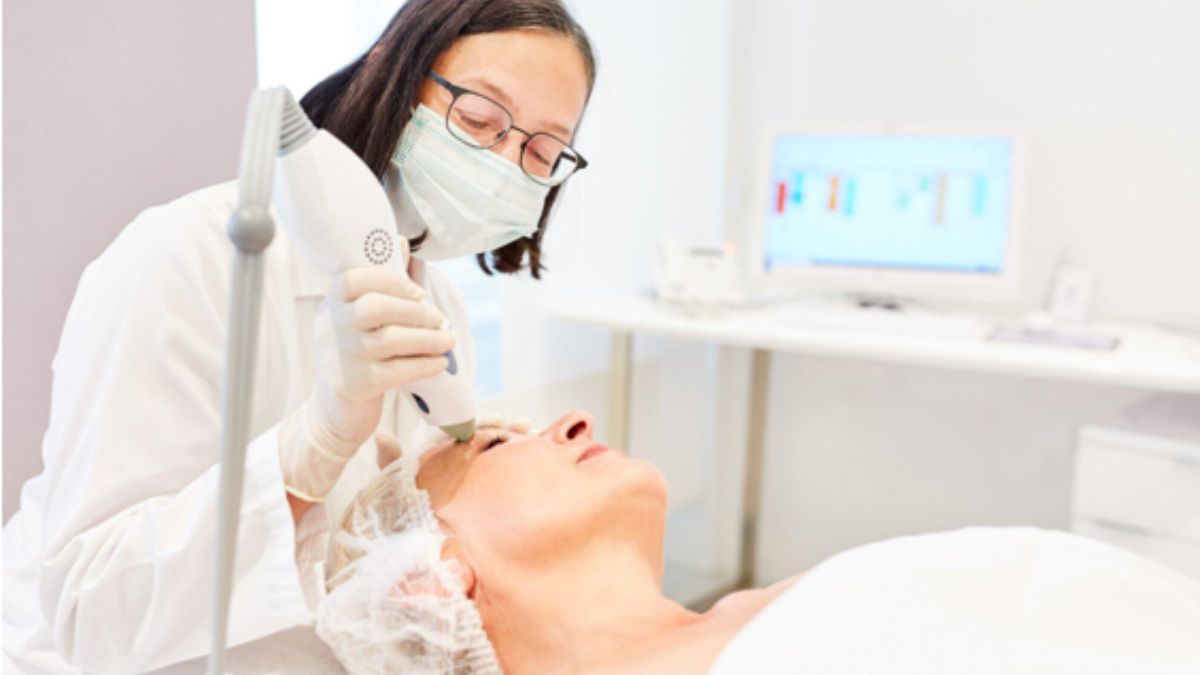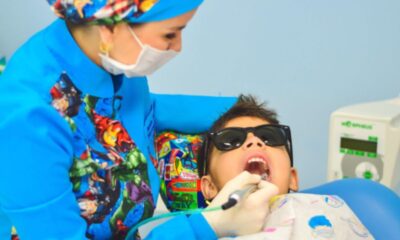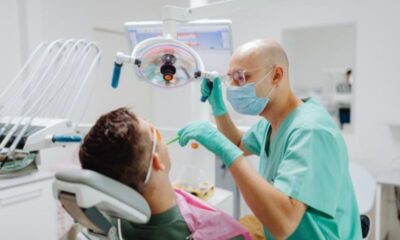HEALTH
The Role of Sustainable Practices in Dental Care

Taking care of our teeth is important. We visit the dentist to keep our smiles bright and our mouths healthy. But have you ever thought about how dental care affects the planet?
Every day, dental offices use water, electricity, and plastic. They create waste and throw away materials that harm the environment. Many dentists are now trying to change this by using sustainable practices.
Why Sustainability Matters in Dental Care?
Sustainability means using resources in a way that does not harm the earth. Dental offices use many things, like plastic cups, gloves, and paper towels. These things often end up in landfills.
The chemicals used to clean tools and treat patients can also be harmful. Dentists use a lot of water to rinse mouths and clean equipment. If they do not use water wisely, a lot of it gets wasted.
Eco-Friendly Materials in Dentistry
Many dental tools are made of plastic. Plastic does not break down easily. When thrown away, it stays in the environment for a long time. Some dentists now use biodegradable materials.
These materials break down naturally and do not pollute the earth. Instead of plastic cups, they use cups made from plant-based materials. Some offices also use cloth bibs instead of paper ones. These bibs can be washed and used again, which reduces waste.
Reducing Water and Energy Use
Dentists need it to clean tools and rinse patients’ mouths. But wasting water is bad for the planet. Some dental offices now use special faucets that control the amount of water used. This helps save water.
Electricity is also used a lot in dental care. Lights, computers, and machines all need power. Some dental offices are now switching to energy-saving lights.
These lights use less electricity but still work well. Some offices also use solar panels. Solar panels collect energy from the sun and turn it into electricity. This helps reduce the need for energy from power plants, which can pollute the air.
Reducing Chemical Waste
Dentists use chemicals to clean tools and treat patients. Some of these chemicals can be harmful if they go into the water supply. Some offices now use steam or ultraviolet light to clean their tools instead of chemicals.
Mercury is another problem in dental care. Many old fillings have mercury in them. When dentists remove these fillings, mercury can get into the environment. Some dental offices now have special filters to catch the mercury and keep it from polluting water.
Eco-Friendly Dental Products for Patients
People can also make better choices at home. Many toothbrushes are made of plastic. Instead, some people now use bamboo toothbrushes. Bamboo is a plant that grows quickly and is biodegradable. This means it does not harm the environment when thrown away.
Toothpaste tubes are often made of plastic. Some companies now make toothpaste in glass jars or tablets. These options create less waste. Dental floss is also a problem because it is made of plastic.
Some companies now make floss from silk or plant-based materials. These options break down naturally and do not pollute the earth.
Recycling in Dental Offices
Dental offices throw away many items every day. Some offices now have recycling programs. They collect used plastic and paper and send them to recycling centers.
Some dental companies also offer programs to recycle old toothbrushes and toothpaste tubes. This helps reduce waste and keeps plastic out of landfills.
The Role of Dentists and Patients
Dentists play a big role in making dental care more sustainable. They can choose to use eco-friendly products and reduce waste in their offices. They can also teach patients about making better choices at home.
Patients also have a role in sustainability. They can ask their dentist about eco-friendly options. They can choose bamboo toothbrushes, use less water when brushing, and recycle dental products.
Making Sustainable Choices Every Day
Simple changes in daily habits can make a big impact. Turning off the water while brushing can save gallons of water. Using a reusable water bottle instead of a plastic cup at the dentist reduces waste.
Bringing a cloth napkin to the dentist instead of using disposable paper towels is another good step. Every small action adds up to a bigger change. Dentists and patients working together can create a healthier planet while still maintaining good oral health.
The Future of Sustainable Dentistry
More dental offices are shifting towards eco-friendly practices, driven by the growing demand for sustainable solutions. Advances in technology have made it easier to adopt environmentally responsible options, such as digital radiography and LED lighting, which reduce energy consumption and minimize waste.
New, eco-friendly materials are being developed to replace traditional supplies, like amalgam fillings and impression materials, which contain toxic substances. For instance, some dentists now use composite resin fillings, which are mercury-free and more environmentally friendly.
As patients become more environmentally conscious, they’re seeking out dental offices that share their values. They’re asking for alternatives to traditional products, such as bamboo toothbrushes and biodegradable impression trays. As this awareness grows, it’s likely to trigger a wave of change in the dental industry.
The future of dentistry is expected to prioritize not only patients’ oral health but also the health of the planet. Dentists who adopt sustainable practices will not only be contributing to a greener future but also attracting a growing demographic of eco-conscious patients.
Sustainable Dental Practices
A Versailles dentist is leading the way in sustainable dental care. They have implemented eco-friendly practices such as using biodegradable materials, reducing chemical waste, and conserving water. By adopting energy-efficient lighting and equipment, they are minimizing their carbon footprint.
Patients visiting this practice can feel good knowing their dental care is not only beneficial for their oral health but also for the environment. The commitment to green dentistry in Versailles sets an example for other dental offices worldwide.
The Importance of Sustainable Dental Care
Sustainability in dental care is important for the health of our planet. Dental offices use a lot of resources, but there are ways to reduce waste and pollution. By using eco-friendly materials, saving water and energy, and recycling, dental offices can make a big difference.
Patients can also help by making better choices at home. Together, we can keep our smiles bright while also protecting the earth. Expand your knowledge and check out more posts on our blog!
HEALTH
The Role of Community in Veteran Health and Wellness

Did you know that a strong community connection can play a transformative role in the health and wellness of our veterans? In recent years, studies have shown that social integration significantly boosts mental health and overall well-being, especially for those who have served in the military.
Veterans often face unique challenges, and having a supportive community can be a crucial factor in their recovery and sustained health. This article explores the vital importance of a community in veteran health and how senior living options can enhance their overall quality of life. Keep on reading.
The Importance of Community in Veteran Well-Being
For veterans transitioning back into civilian life, the shift can often feel overwhelming. Many struggle with feelings of isolation and alienation from those who haven’t shared similar experiences. This is where a sense of community becomes essential.
A supportive network helps veterans feel connected and valued. In senior living environments, fostering a community spirit can lead to:
A Sense of Belonging
Veterans often feel better when they know others share their past. Living with peers who understand can make them feel safe. This helps build real friendships and trust.
Improved Mental Health
Being around others can ease sad or anxious thoughts. Talking, laughing, and sharing stories helps the mind. These small moments lift spirits each day.
Physical Health Benefits
Group activities like walks or games keep the body moving. Staying active with others can be more fun. It helps veterans stay strong and feel better.
Easy Access to Resources
A strong group can guide members to helpful tools. It’s easier to ask for help when others understand. Veterans find what they need without feeling lost.
How Senior Living Enhances Social Connections
Many places where seniors live are made to feel like a strong community. Some have special programs just for veterans. These programs help them feel supported and connected with others.
There are group trips, fitness classes, and other fun things planned for veterans. These keep them busy, happy, and moving. It also helps them meet people who understand them.
Some places also give extra care for mental health. Veterans can talk to people who know about things like PTSD. Being around others with similar stories can help them feel less alone.
Building Supportive Care Frameworks
Supportive care is more than just meeting physical needs; it’s about holistic wellness that encompasses emotional, mental, and social aspects. Within a community-focused approach, veterans can tap into:
- Peer support groups
- Integrative wellness programs
- Access to healthcare
The Unique Proposition of Community-Focused Senior Living
Choosing a senior living arrangement that emphasizes community focus provides veterans with the unique opportunity to enhance their quality of life. Not only can they maintain independence, but they can also engage in a variety of activities designed to foster relationships and an active lifestyle.
Facilities that prioritize a community focus in veteran health often include programming tailored specifically for them. They offer more than just a place to live. Veteran programs for seniors create a supportive atmosphere promoting veteran wellness through engagement, shared experiences, and friendship.
Invest in Your Health and Well-Being Today!
If you or a loved one is a veteran looking for a welcoming community, consider exploring options that offer comprehensive support and a vibrant community in veteran life. With a focus on wellness and connection, you can conquer the challenges of daily living and thrive among peers who understand and appreciate your journey. Your health and well-being deserve a community that cares.
For more related topics, check out the rest of our blog!
HEALTH
How Cannabis Extracts are Redefining Medical Applications

How can one plant help with so many health needs?
Cannabis extracts are now used in new ways to treat different medical problems. These extracts come in forms like oils, drops, and pills. Many people use them to feel better without strong drugs.
Doctors and patients are starting to see the value of these products. They are easy to use and made with care. If you’re looking for new ways to feel better, cannabis extracts might be worth a try. Want to learn more about how they work and how they can help? Keep reading!
Managing Pain
Many people deal with pain each day, and finding safe ways to manage it matters. Cannabis extracts are giving new hope by offering support for pain that doesn’t always respond to common treatments.
These extracts may help with joint pain, nerve pain, and pain from injuries. They work by interacting with the body’s systems in a natural way. Unlike some strong drugs, they are less likely to cause harm with long use.
Doctors are now looking at these extracts as a helpful tool for people with ongoing pain. As more studies are done, more is learned about their benefits. To stay informed about growing options for care, reading articles like these can help guide smart choices.
Helping with Sleep
Trouble falling asleep or staying asleep can affect daily life. Cannabis extracts are now being used to support better sleep by helping the body relax at night. Some people say they fall asleep faster and wake up less often.
These extracts may work by calming certain parts of the brain that stay active during rest. Many users prefer them over common sleep aids because they feel more natural. They are often taken as drops or capsules before bedtime.
People who have tried other sleep methods without success are now turning to this option. As more is learned, cannabis extracts may become a trusted part of nightly routines. For those hoping to wake up feeling more rested, they could be a step toward better sleep.
Easing Anxiety and Stress
Busy days and constant pressure can lead to feeling overwhelmed. Cannabis extracts are now being used to help ease anxiety and lower stress levels. Some people say they feel calmer and more balanced after using them.
These extracts may work by helping the brain respond better to stress signals. They are often taken in small amounts during the day and may support a more peaceful state of mind in daily life.
Supporting Appetite and Nausea Relief
Feeling sick or not wanting to eat can make recovery harder. Cannabis extracts are now being used to help reduce nausea and improve appetite. This can be helpful for people going through treatments that make eating difficult.
The extracts may work by calming the stomach and making food seem more appealing. They are often taken in small doses and come in easy-to-use forms. For some, they offer simple support during times of low appetite or queasiness.
Exploring New Paths with Cannabis Extracts
Cannabis extracts are opening new doors in medical care, offering support in ways that were once hard to find. From easing daily struggles to helping with serious health challenges, these extracts are changing how treatment can look and feel.
Their growing use shows how natural options are becoming part of trusted care plans. As research continues, more people may find comfort and balance through these products. Exploring new paths with cannabis extracts in modern care shows how far healing can go.
Did you find this article helpful? Visit our website for more awesome content like this.
HEALTH
Understanding the Aesthetic and Health Benefits of Blepharoplasty

Have you ever looked in the mirror and wished for a change? If tired eyes are affecting how others see you, blepharoplasty could help. This procedure offers a way to refresh your look and boost your confidence.
Many people feel self-conscious about their eyes. They may be a bit droopy or puffy, which can age the face. Blepharoplasty is designed to address these concerns, allowing you to feel confident about your appearance again.
In this article, we will discuss the aesthetic and health benefits of blepharoplasty. Read more!
Removing Excess Skin for Clearer Vision
Excess eyelid skin can droop over the eyes and block your sight. This often makes daily tasks like reading or driving harder than they should be. Removing this skin can help restore a full, clear field of vision.
One of the key blepharoplasty benefits is the improvement in both appearance and function. Patients often feel more alert and look more refreshed after surgery. With better vision and comfort, daily life becomes easier and more enjoyable.
Reducing Eye Strain and Fatigue..
Eye strain is a common issue for many people today. Stress and daily demands can leave your eyes feeling tired and overworked. Blepharoplasty can significantly reduce this fatigue and refresh your overall appearance.
After the procedure, individuals often report that their eyes feel lighter and less strained. This new comfort might allow for longer periods of focus on tasks. Feeling less tired can also improve your mood and boost your energy levels.
Correcting Puffy or Droopy Eyelids
Puffy or droopy eyelids can impact both your looks and comfort. People often choose blepharoplasty to address these issues. This transformation brings a more alert and youthful gaze.
Your eyes are a vital part of your expression. Correcting droopiness can make them appear larger and brighter. Increased confidence follows, as many feel more attractive and engaged with the world.
Enhancing Facial Balance and Symmetry
Facial symmetry plays a significant role in perceived beauty. Blepharoplasty helps align your eyes and eyelids, promoting a more harmonious look. This balance enhances facial aesthetics dramatically.
A proper alignment may boost your overall self-esteem. Feeling more balanced and beautiful can change how you approach social situations. Many report newfound confidence after achieving this desired symmetry.
Improving Self-Image and Emotional Well-Being
When you look good, you often feel good too. The mental clarity that comes with improved appearance is powerful. Many experience enhanced self-image after undergoing Blepharoplasty.
People often report feeling more capable in social settings and daily interactions. An improved self-image can lead to better opportunities. Embracing self-care through surgery can also be a pivotal moment for many.
The Transformative Power of Blepharoplasty
Blepharoplasty is more than just a physical change; it can greatly enhance your quality of life. Addressing common eyelid concerns can boost your self-confidence and improve visual comfort. Consider this procedure if you’re looking to revitalize your appearance.
Connecting with a professional can help you understand how Blepharoplasty might work for you. Take the first step towards refreshed eyes and a renewed spirit. You deserve to feel confident in how you look every day.
Did this article help you? Browse our blog for more interesting topics.
-

 HEALTH1 year ago
HEALTH1 year agoIntegrating Semaglutide into Your Weight Loss Plan: A Practical Guide
-

 HOME IMPROVEMENT1 year ago
HOME IMPROVEMENT1 year agoHow to Choose the Perfect Neutral Area Rug for Every Room
-

 LAW1 year ago
LAW1 year agoPost-Divorce Considerations in California: Modifications and Long-Term Planning
-

 LAW1 year ago
LAW1 year agoTeenage Drivers and Car Accidents in California: Risks and Parental Liability
-

 CONSTRUCTION1 year ago
CONSTRUCTION1 year agoConstruction Site Safety Regulations in New York and Your Rights as a Worker
-

 FINANCE1 year ago
FINANCE1 year agoDigital Asset Management in Florida Estate Planning
-

 LAW1 year ago
LAW1 year agoKentucky’s School Football: Concussions, Injuries, and Legal Options
-

 LAW1 year ago
LAW1 year agoGang Activity and Criminal Charges in CA: Protecting Your Rights






